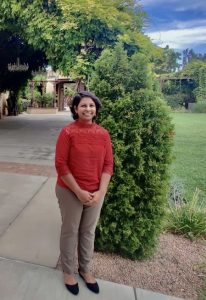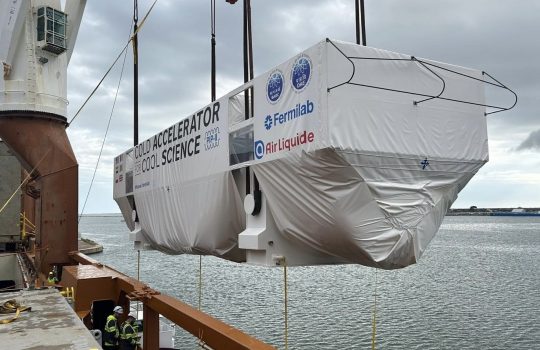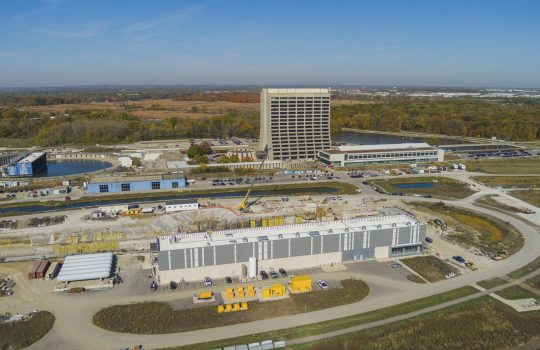How long have you been at the U.S. Department of Energy’s Fermi National Accelerator Laboratory?
I started end of October 2021.
How did you get interested in physics?
I think it started from my family — not only [my interest] in physics but in science — because my mother is a physics teacher. I remember her teaching me, explaining things scientifically to me at a very young age. She always encouraged me to pursue a Ph.D. in physics.
In my country [Sri Lanka], if we want to continue our studies in science, we can do math, chemistry and physics subjects in high school. After high school, I did my bachelor’s studies at the University of Peradeniya, Sri Lanka. There, I got selected for a physics special program, which is a four-year course. From there, I received a scholarship to come here [to the U.S.] to do higher studies. I came here in 2015 and did my master’s and Ph.D. at Old Dominion University, Virginia, in collaboration with Thomas Jefferson National Accelerator Facility. It’s been a long journey, but it started from my family.
What are the projects you’re working on now at Fermilab?
Currently, I’m working on the Booster. My investigation is about the electron cloud existence: whether there is an electron cloud present in the Booster and if so, whether it would impact the PIP-II-era Booster — because PIP-II requires an intensity upgrade in the Booster.
What is an electron cloud?
Stray electrons always exist inside the beam pipe, and the electromagnetic fields of the beam can accelerate these electrons. When such electrons impact vacuum chamber walls, secondary electrons are generated according to their impact energy and the secondary electron yield of the surface. Repeating this process can lead to an avalanche, creating the electron cloud. The electron cloud acts as a lens, providing additional focusing or de-focusing to the beam, and can severely limit the performance of high-intensity proton accelerators [by causing] transverse instabilities, transverse emittance growth, particle losses, etc. That is why we want to investigate the effect of the electron cloud in the PIP-II-era Booster.
Is there anything that you are most excited about for PIP-II in the future?
I think altogether, the Deep Underground Neutrino Experiment [that PIP-II will power] is fascinating. Making the world’s most intense high-energy neutrino beam! I’m lucky to be a part of it.
What’s the most rewarding part of your job?
I think it’s understanding, finding solutions and learning something new.
What is the most challenging part of your work?
This is my first position after my Ph.D., so everything is new, working as a scientist. It’s a bit different area of work: The machine is vast, and there’s a lot to learn. But it is like a dream come true to get a chance to work at Fermilab. I feel fortunate.
What do you like best about working at Fermilab?
I like the people. I feel welcomed and always helped; I never had a problem. Also, I like all the landscape and all the cultural diversity and the outdoor activities. It’s like a family altogether; it’s not only work.
What do you like to do when you are not at work?
I like traveling. I like being outside, driving and listening to music. I like the sky, the evening sky and the sunset here; you can look at it forever.
Fermi National Accelerator Laboratory is supported by the Office of Science of the U.S. Department of Energy. The Office of Science is the single largest supporter of basic research in the physical sciences in the United States and is working to address some of the most pressing challenges of our time. For more information, please visit science.energy.gov.




